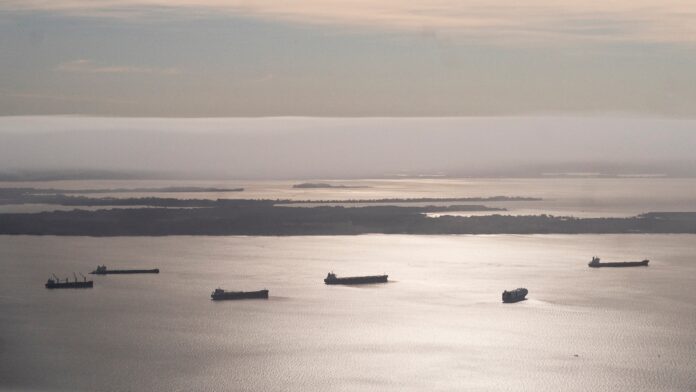
The collapse of Baltimore’s Francis Scott Key Bridge, which severed ocean links to the city’s port, adds a fresh headache to global supply chains already struggling with the effects of war, climate change and higher interest rates.
Tuesday’s mishap means a significant disruption for East Coast shipping, with trade in autos, coal and machinery likely to be the hardest hit, according to government officials and industry executives. It comes as global shippers are grappling with a historic drought that has left the Panama Canal without enough water for routine operations, as well as two wars in Europe and the Middle East that have turned routine commercial voyages into daring adventures.
Two years of rising interest rates also have increased the cost of higher inventories, which help manufacturers and retailers guard against unexpected snafus.
“This comes at a particularly difficult time,” said Bindiya Vakil, chief executive of Resilinc, a supply chain management company. “With interest rates high, companies are looking to keep products moving.”
The container ship that stuck the bridge around 1:40 a.m. Tuesday remained snarled in the span’s twisted wreckage, blocking the sole channel that connects the Port of Baltimore to the Atlantic Ocean. On the docks, trucks continued to move cargo. But vessel traffic to and from the port was suspended “until further notice,” according to the Maryland Port Authority website.
“Nothing’s going to get out of the port, and nothing is going to get in for the foreseeable future unless they clear away that rubbish,” said Carl Bentzel, a commissioner with the Federal Maritime Commission. “It will take substantial effort to clear that facility. I think it will be a long-term project deserving of federal support like a hurricane or major natural disaster.”
Normal port operations are unlikely to resume anytime soon, he said. That’s bad news for automakers such as Mazda, Mercedes-Benz, and Suburu, which are major users of the facility. Baltimore also is the nation’s leading “roll-on, roll-off” port, handling more self-propelled cargo such as heavy construction equipment than any other.
Goods that are already on the docks can still be moved by trucks, according to Ken Adamo, chief of analytics at DAT Solutions. But e-commerce warehouses in eastern Pennsylvania also are likely to feel the effects of the port’s shutdown.
Supply chain executives and the ocean carriers will determine the best response to the disruption, depending upon where their cargo is going.
“They’re scrambling right now,” Adamo said.
Brian Bourke, global chief commercial officer for SEKO Logistics in Chicago, said the bridge collapse also will complicate the shipment of hazardous materials through the Northeast and Mid-Atlantic region.
Within a 30-mile radius, there are roughly 3,200 factories, warehouses and distribution centers that potentially use the port, according to Vakil. The port’s closure could disrupt shipments of 7,000 parts or components and 3,300 finished products, according to the company’s database.
Larger retailers such as Amazon or Wal-Mart will be able to navigate the disruption more easily than smaller companies that lack alternative logistics arrangements, she said. Some manufacturers could run short of parts in the coming weeks, Vakil said.
The expected hit to trade is likely to fall far short of the massive disruption experienced during the pandemic, when consumers and businesses alike struggled to obtain needed goods. Many companies have modified their “just-in-time” manufacturing strategies by maintaining higher inventories of needed parts, thus allowing them to ride out temporary problems.
“We did learn the lesson from the past,” she said.
Officials in Norfolk are bracing for an increase in traffic, as vessels that would have docked in Baltimore are rerouted to other ports.
As work begins to clear the blocked shipping channel, ports in New York-New Jersey, Philadelphia, Delaware and Norfolk are likely to share the load, said Joe Harris, senior director for communications with the Virginia Port Authority.
“It’s hard to say where it’s all going to go. It’s very early,” said Harris. “But we’ll see something.”
Norfolk handled a significant jump in container volume during the pandemic and has the capacity to absorb vessels that are redirected from a stricken Baltimore, he said.
(c) 2024, The Washington Post · David J. Lynch












Interesting to see if they can put up a temporary bridge in a year or so while they build a new permanent bridge
A temporary bridge unfortunately would obstruct the port operations. There are alternative highways but there is only one shipping channel.
The Baltimore Fire Department called the collapse a “developing mass casualty event.” False Flag!